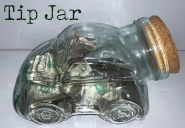

















|
|---|
|
INDUSTRIAL STANDARDS. Publication: The New York Times Byline: E.P. Chalfant Date: 27 October 1907 Note: Part of a subsection called “How Auto Manufacturers View the Trend of Car Development” |
The so-called popular car is rapidly resolving itself into a general type, and there is a tendency among the makers to standardize their parts. Eventually the pleasure cars will resolve themselves into about three distinct types, the first being high-priced cars ranging from $3,500 to $6,000; the second class will be from $1,500 to $3,000, and the third class of cars listing below $1,500. There is unlikely to be anything standard in respect to horse power and price within the three classes. There will always be makers in the second class who will endeavor to supply the horse power and efficiency of cars in the first class, and will do this at the expense of quality and efficiency. There will be even more manufacturers in the third class who will endeavor to supply at low cost the horse power and qualifications of the cars in the second class, but it will result in each case, either in the public finding out that these cars are not all they claim to be, or in the manufacturers finding that they cannot continue to produce them profitably. It is safe to say that the average horse power of the cars in the first class will be forty to fifty, and the price $4,000 to $5,000. Of cars in the second class the average will be 30 and the average price $2,500. Of cars in the third class the average horse power will be fourteen to sixteen, and the average price about $1,000.
The six-cylinder car is unquestionably a fad and will not be long lived. The astute manufacturers are taking advantage of its present popularity and are supplying what the public demands, but in all likelihood a few more seasons will see the end of the six-cylidner popularity.
The perfected automobile to-day has reached a general type which will probably be maintained for many years. There is but small room for improvement in the general lines, and they must be reduced to structural details, relating chiefly to motor, transmission, and rear construction.
The outlook for 1908 is by no means as encouraging as it appeared a year ago for the season of 1907. There are numerous reasons for this, chiefly overproduction this year, owing to weather and trade conditions, the increase in the number of modern second-hand cars, the advent of a large number of stylish looking cars at very reasonable prices, and the current impression that a Presidential year is never a good business year.
The lower priced cars are gaining rapidly in popularity for they are offering much more car value for the money than ever before. The consumers are beginning to realize that an investment of $750 to $2,500 will purchase a reliable car of sufficient speed to break all speed laws and with abundant power to negotiate hills comfortably. These are cars that are inexpensive to maintain, and they are operated by the owner and require but slight experience to keep in operation and tuned up close to their efficiency.
